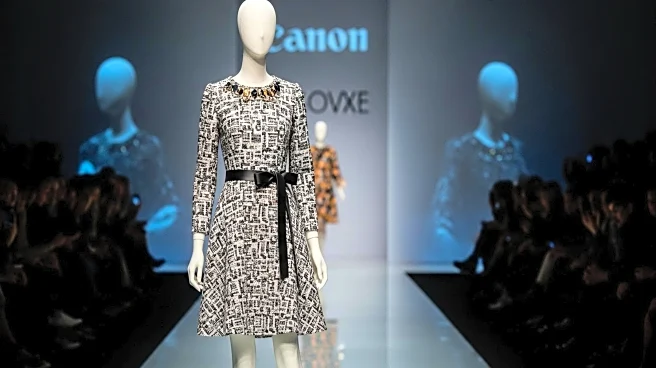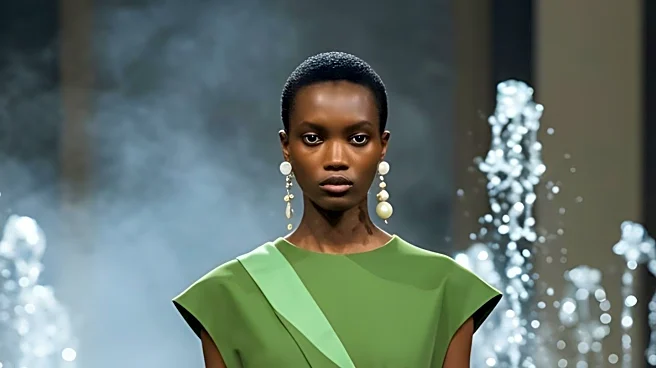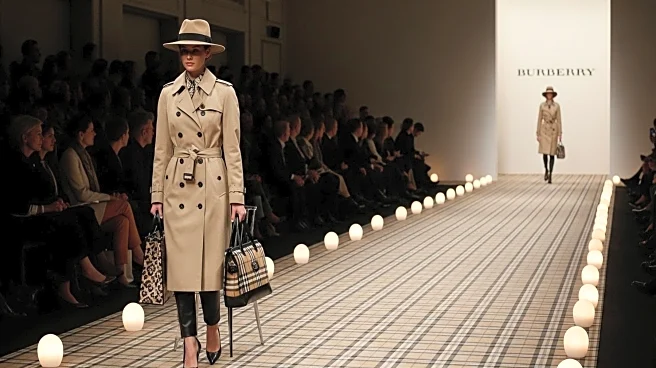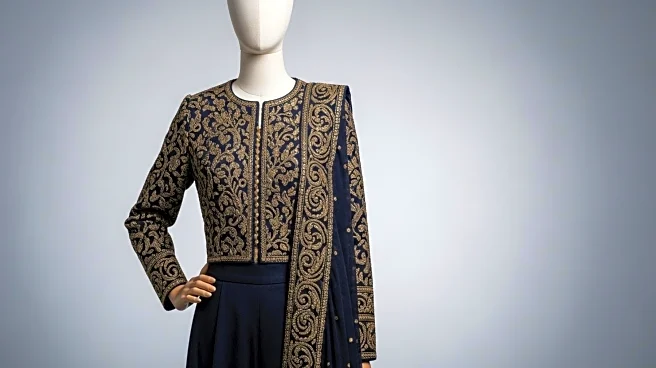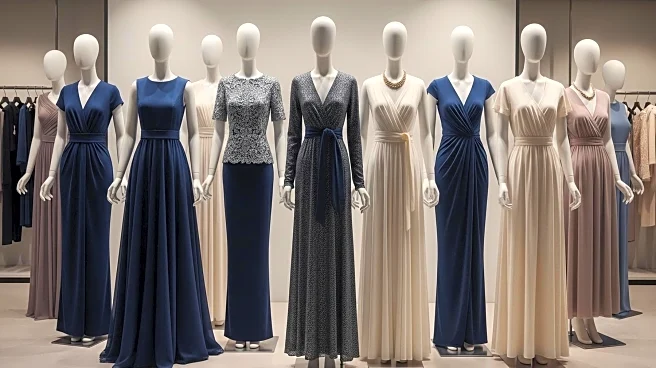What's Happening?
H&M made a significant return to London Fashion Week after a seven-year hiatus, showcasing its revamped strategy aimed at boosting sales and enhancing its brand image. The event, held at the 180 Strand venue, featured a lively outdoor runway presentation with performances by British singer Lola Young and appearances by top models such as Romeo Beckham. The show was creatively directed by Katie Grand and styled by Jacob K, marking a high-stakes moment for H&M as it seeks to deliver on its creative turnaround. The brand is attempting to carve out a distinct position in a crowded market, squeezed between ultra-fast-fashion players like Shein and more premium offerings from brands like Zara.
Why It's Important?
H&M's return to London Fashion Week is crucial as the brand struggles with sluggish sales and aims to rejuvenate its image. The event is part of a broader strategy to make H&M 'cool' again, focusing on elevating its fashion credibility. Despite efforts to boost performance through marketing campaigns and improved shopping experiences, H&M's revenue fell by 5% in the second quarter, partly due to currency effects. The brand's ability to offer quality products and create 'heat' around its image is essential for its long-term financial success. This runway show is a pivotal moment in H&M's journey to regain relevance and compete effectively in the fast-fashion industry.
What's Next?
H&M's future performance will depend on its ability to deliver the right products to the right markets at the right time. The brand is in an 'intense learning period' to build back its image before seeing substantial financial results. Continued efforts to enhance product quality and create viral marketing moments are expected. The brand's leadership, including CEO Daniel Ervér, is focused on finding ways to inspire fashion while inviting consumers to express their personalities through H&M's offerings. The success of these strategies will be crucial in determining H&M's ability to compete with fast-fashion giants and premium brands.
Beyond the Headlines
The deeper implications of H&M's strategy involve balancing its 'everyman' sales pitch with the need to elevate its products. The brand's efforts to inspire fashion and invite personal expression reflect a cultural shift towards individuality in fashion. H&M's ability to navigate this shift while maintaining competitiveness on value will be key to its long-term success. The brand's journey highlights the challenges faced by fast-fashion companies in adapting to changing consumer preferences and market dynamics.


